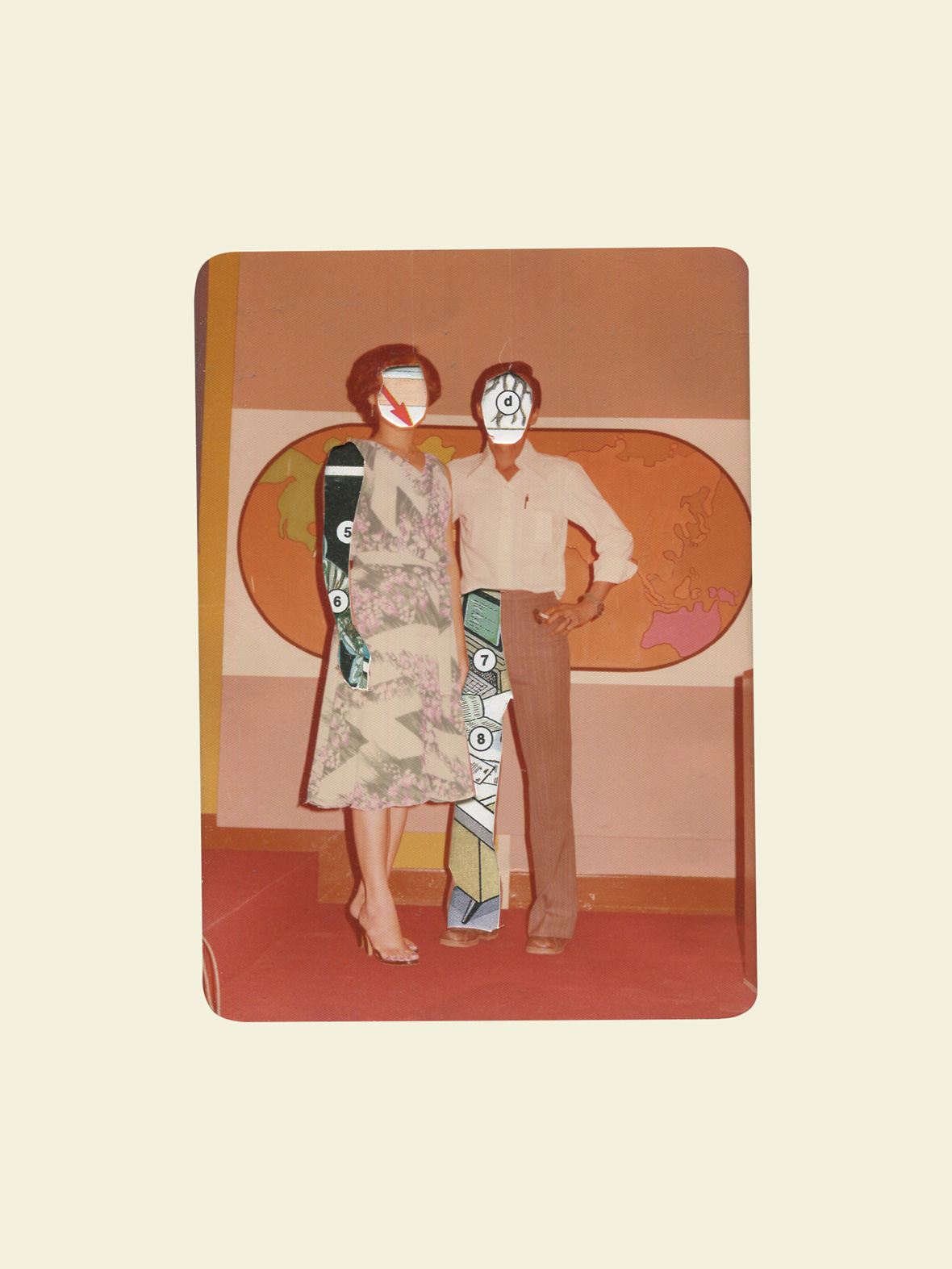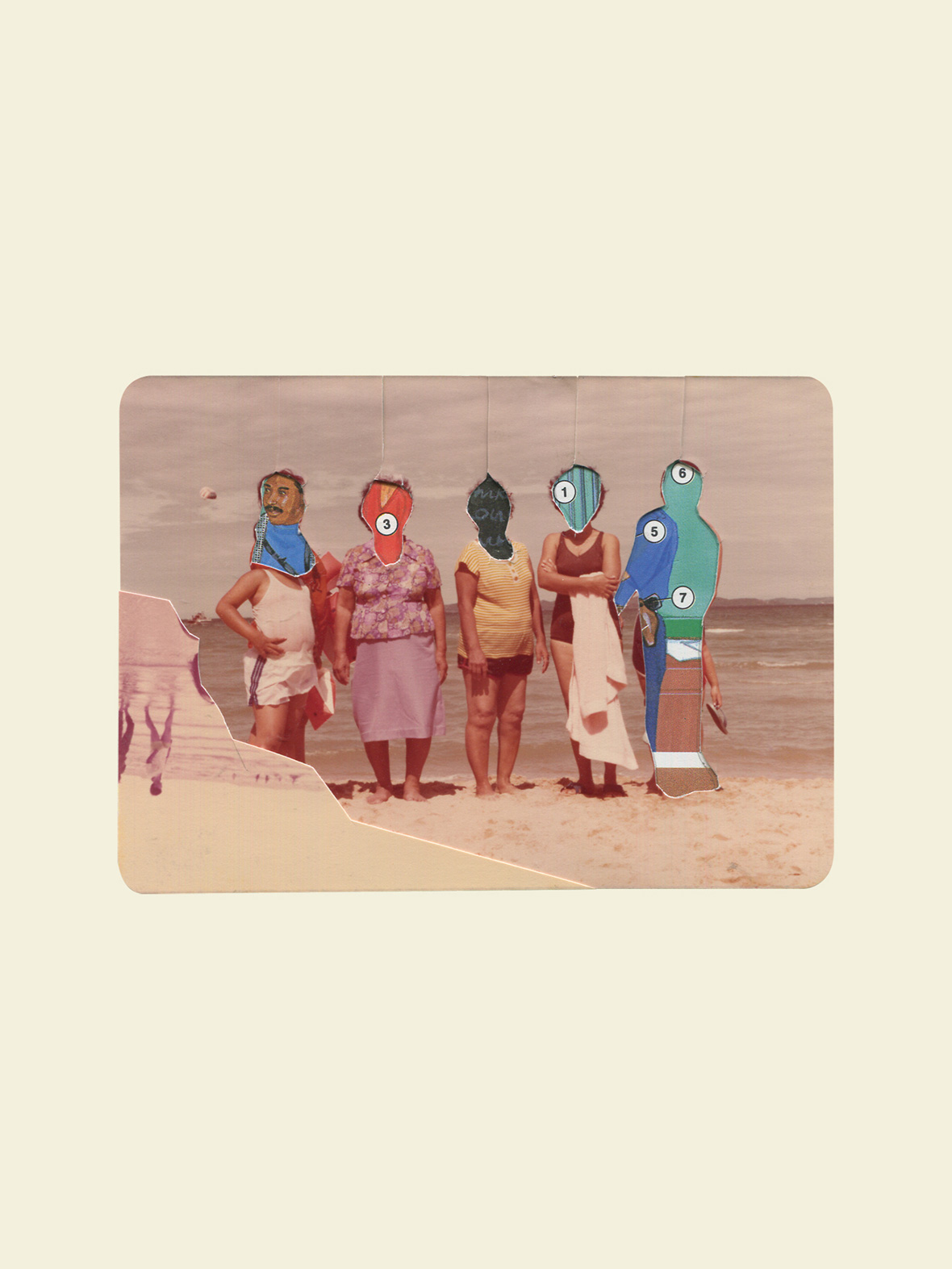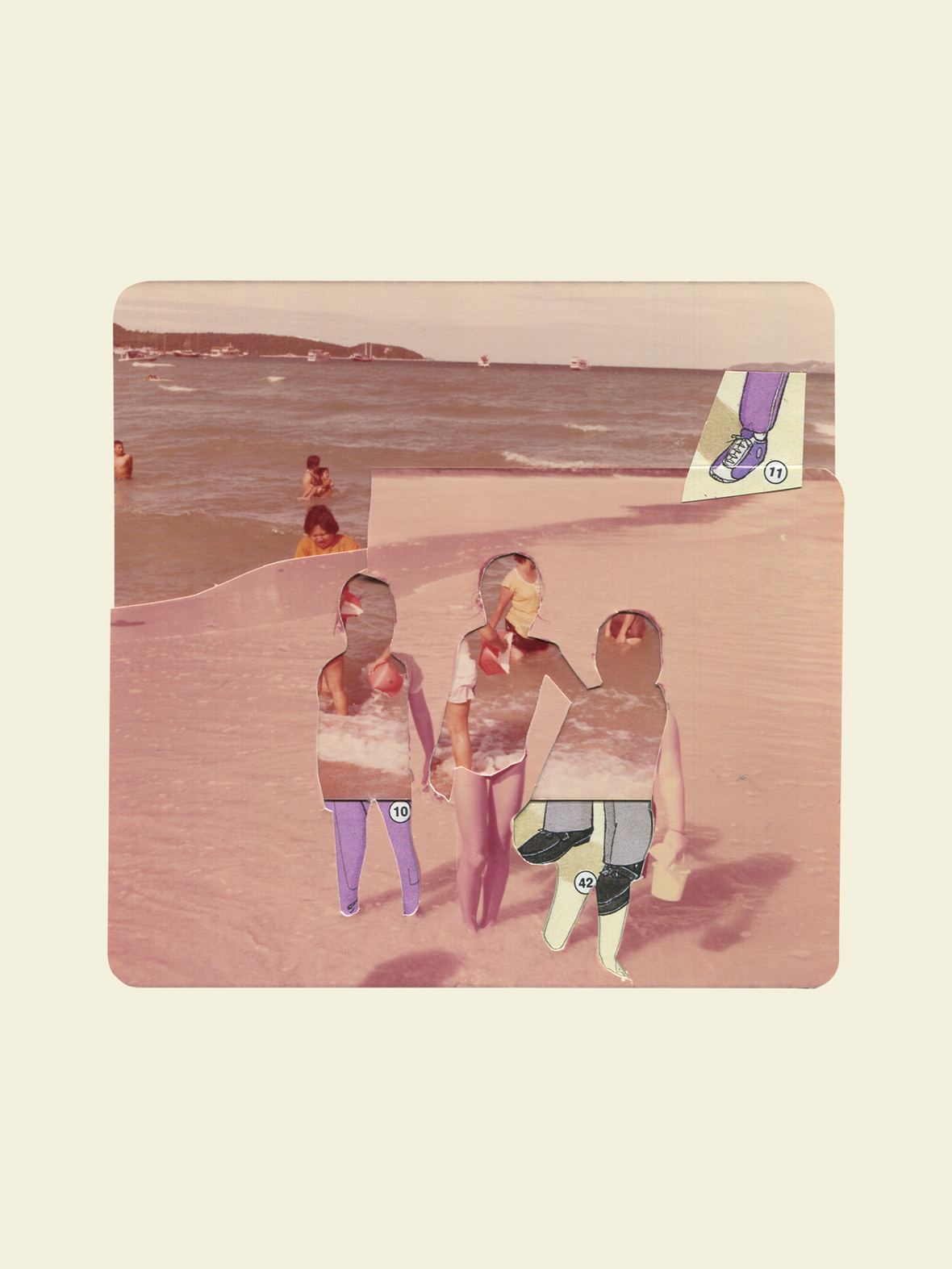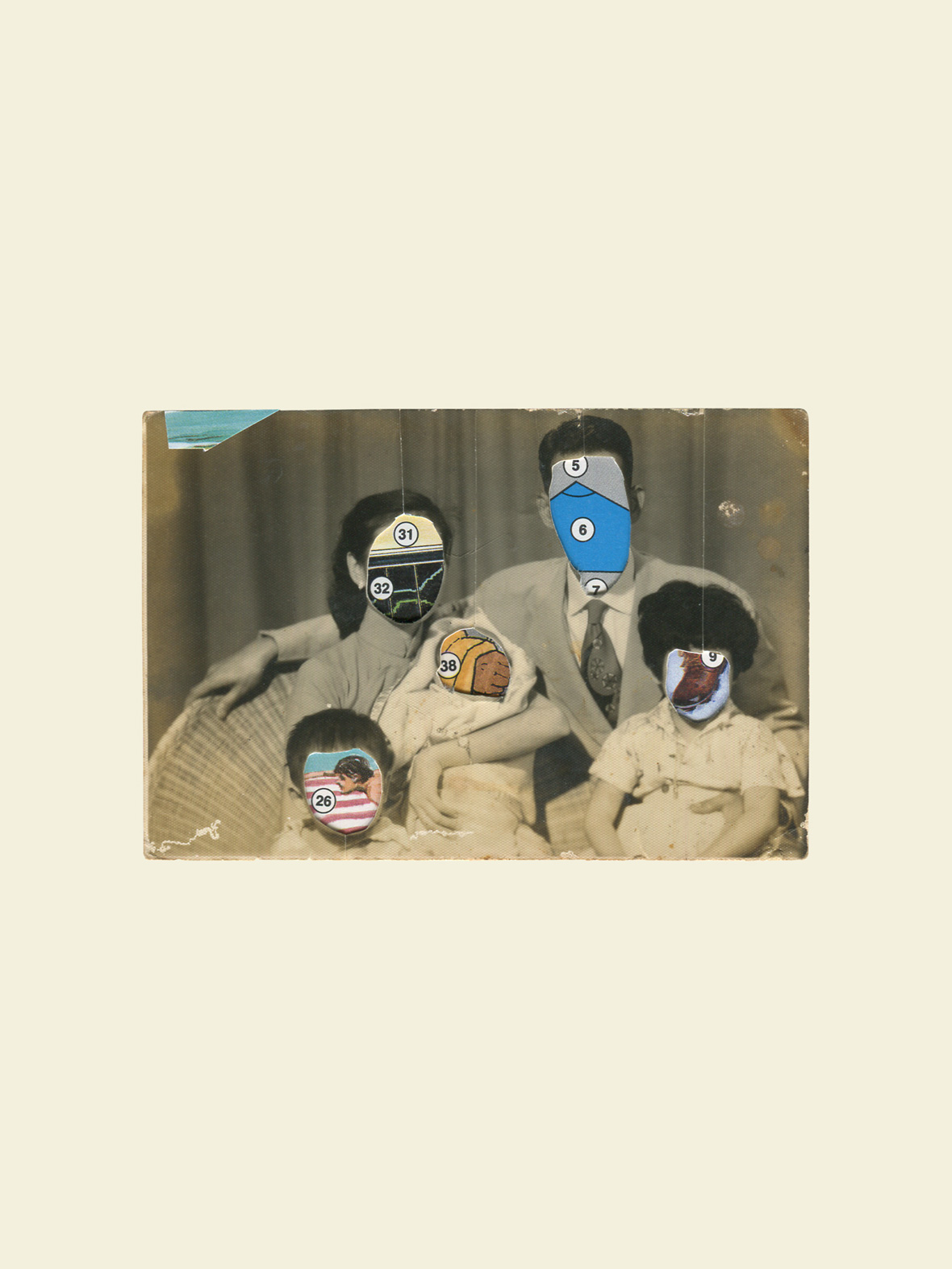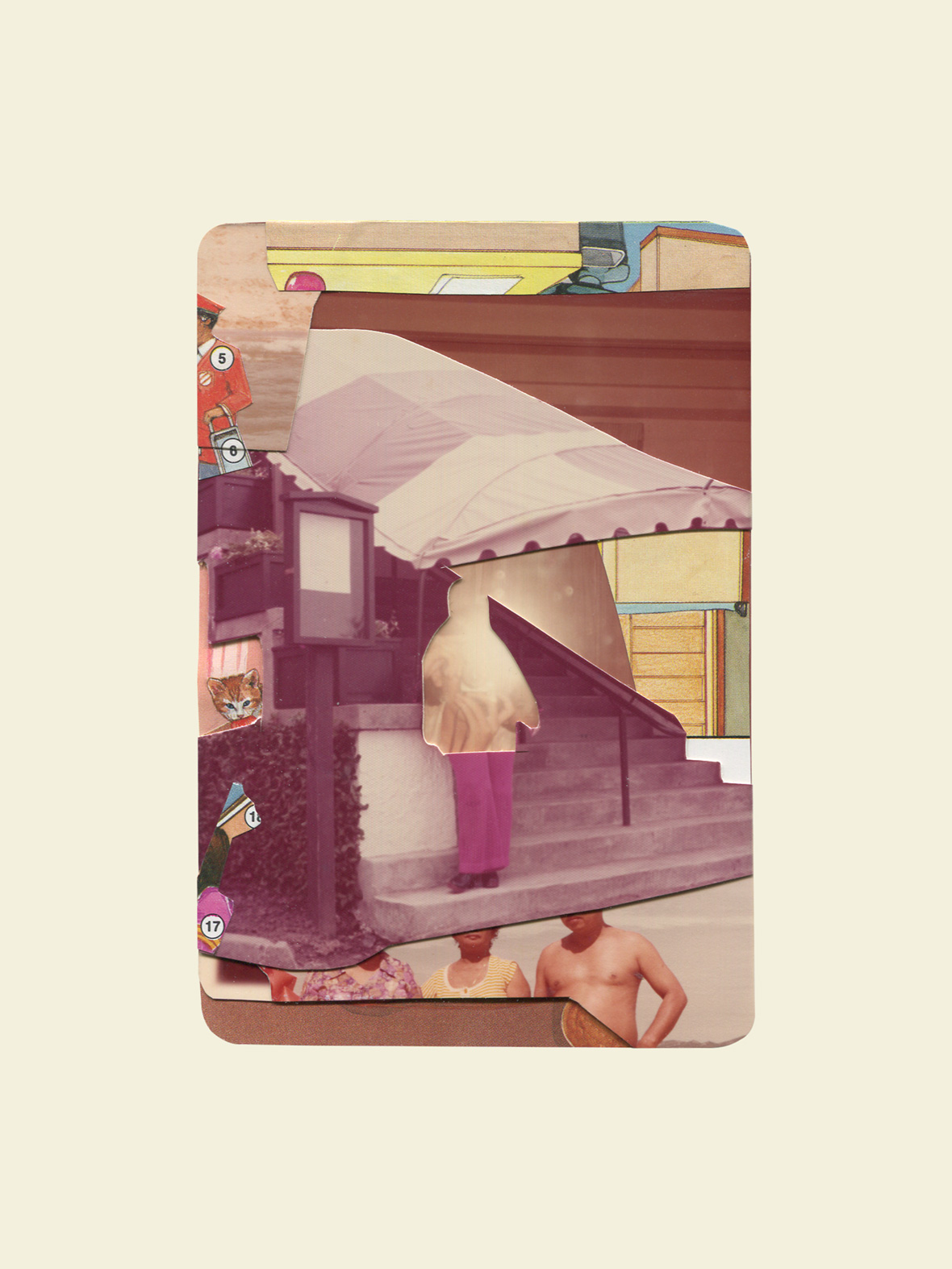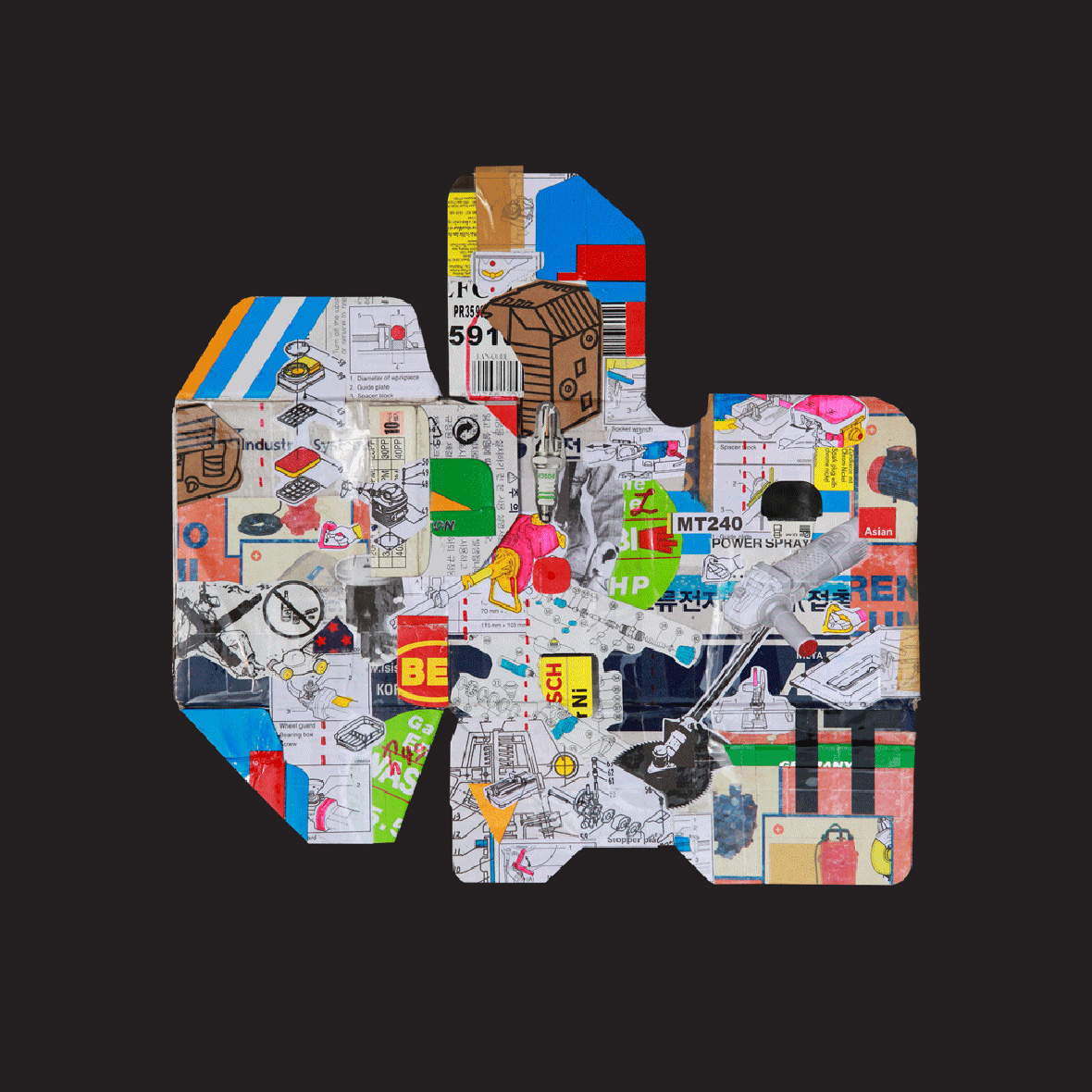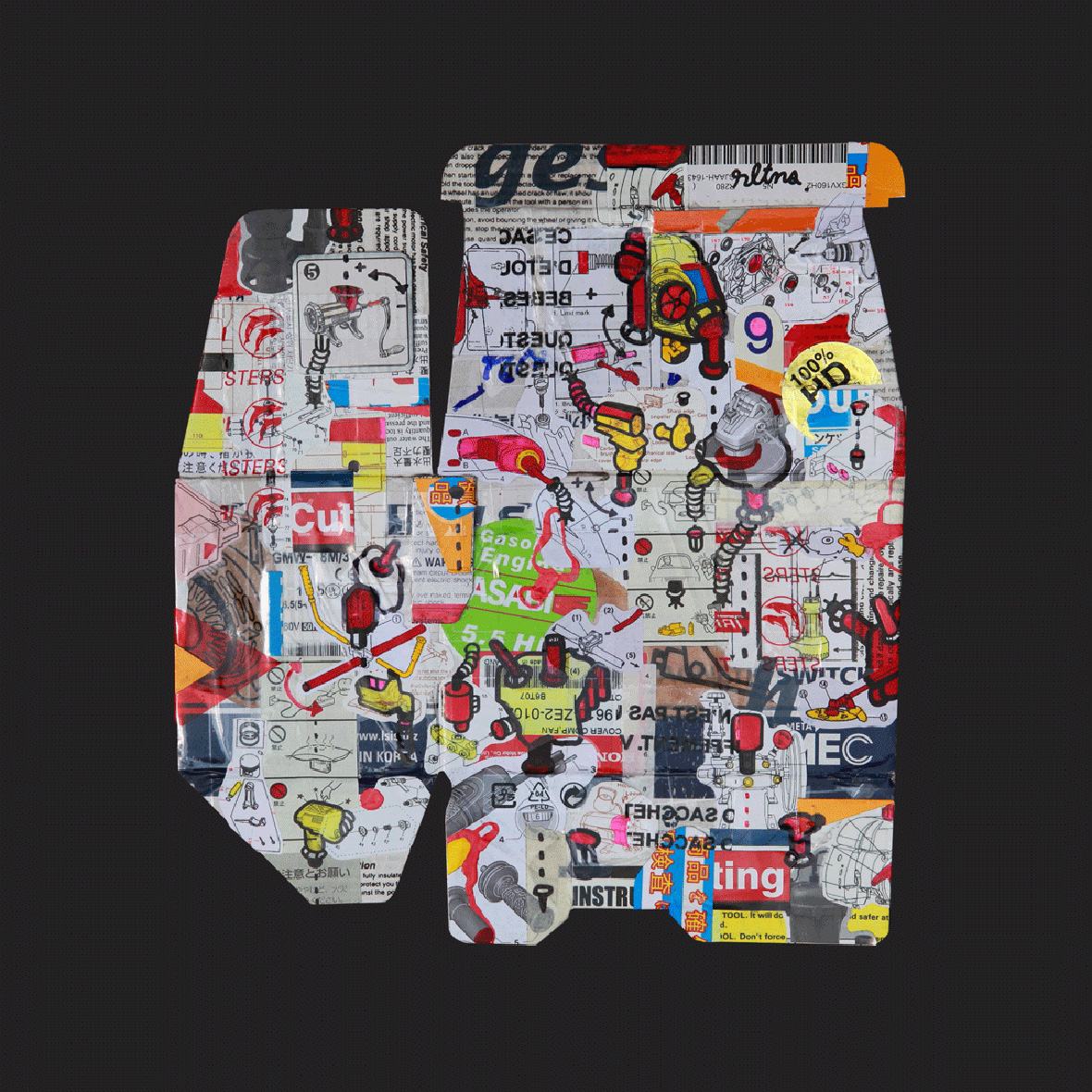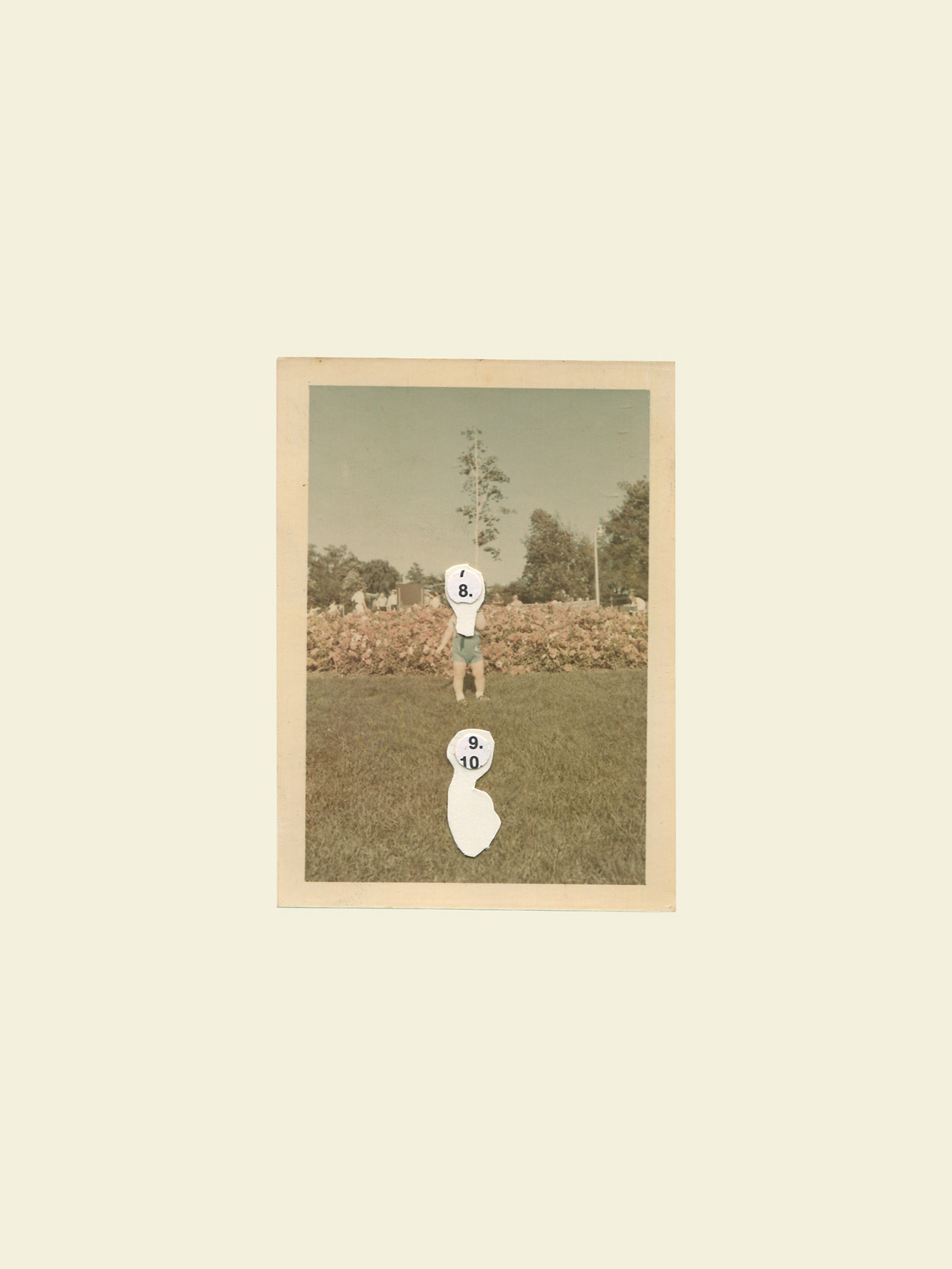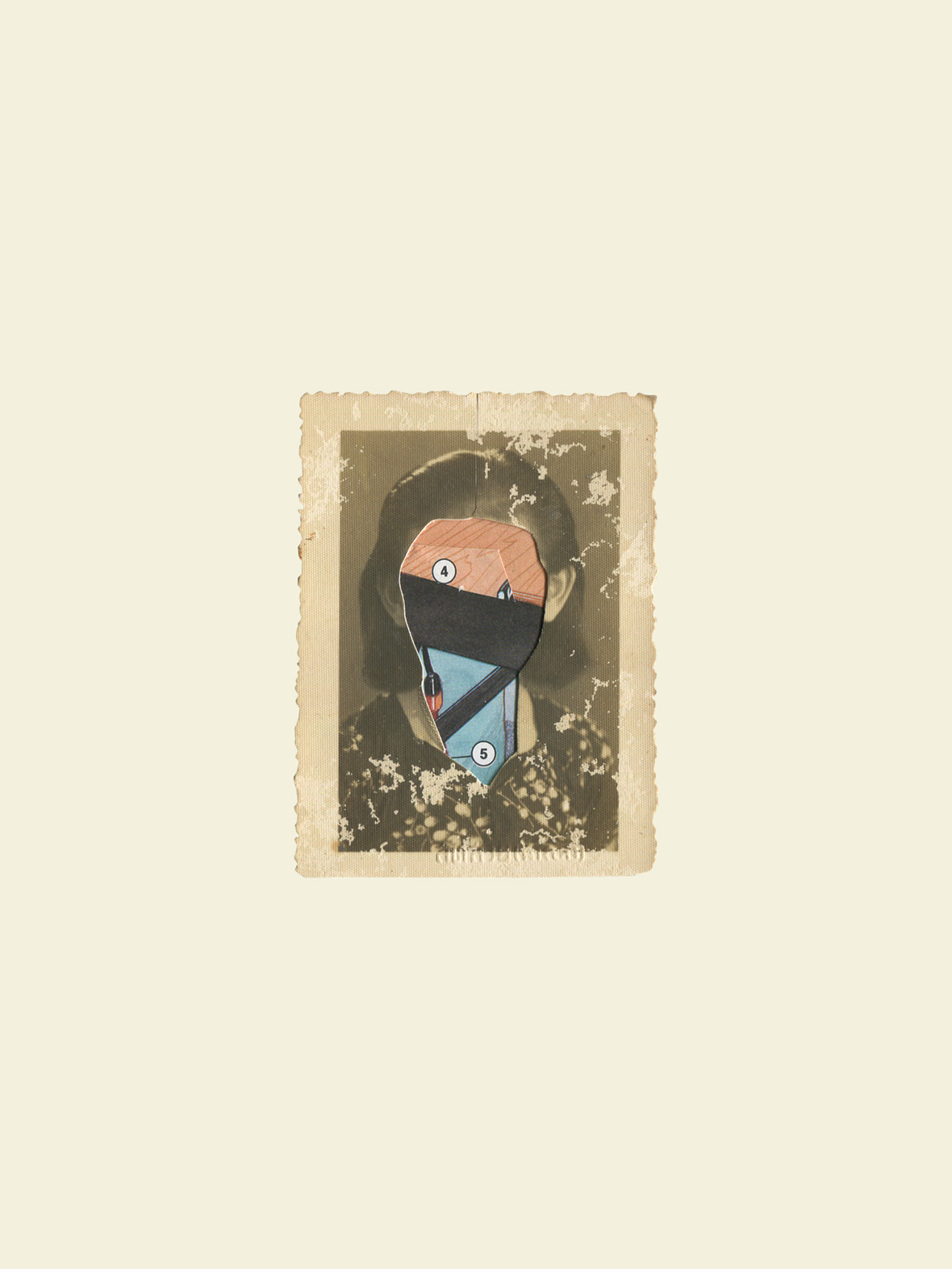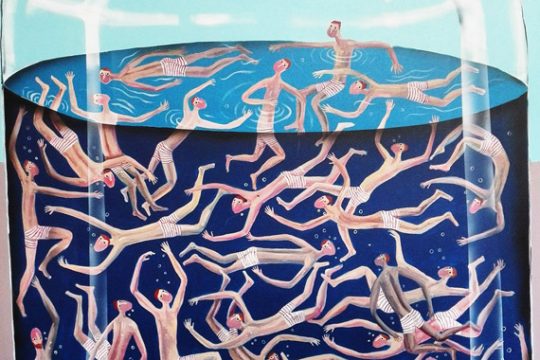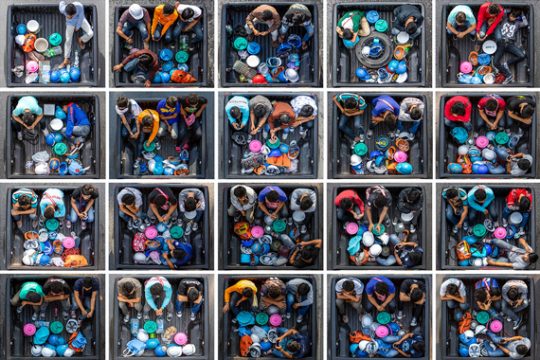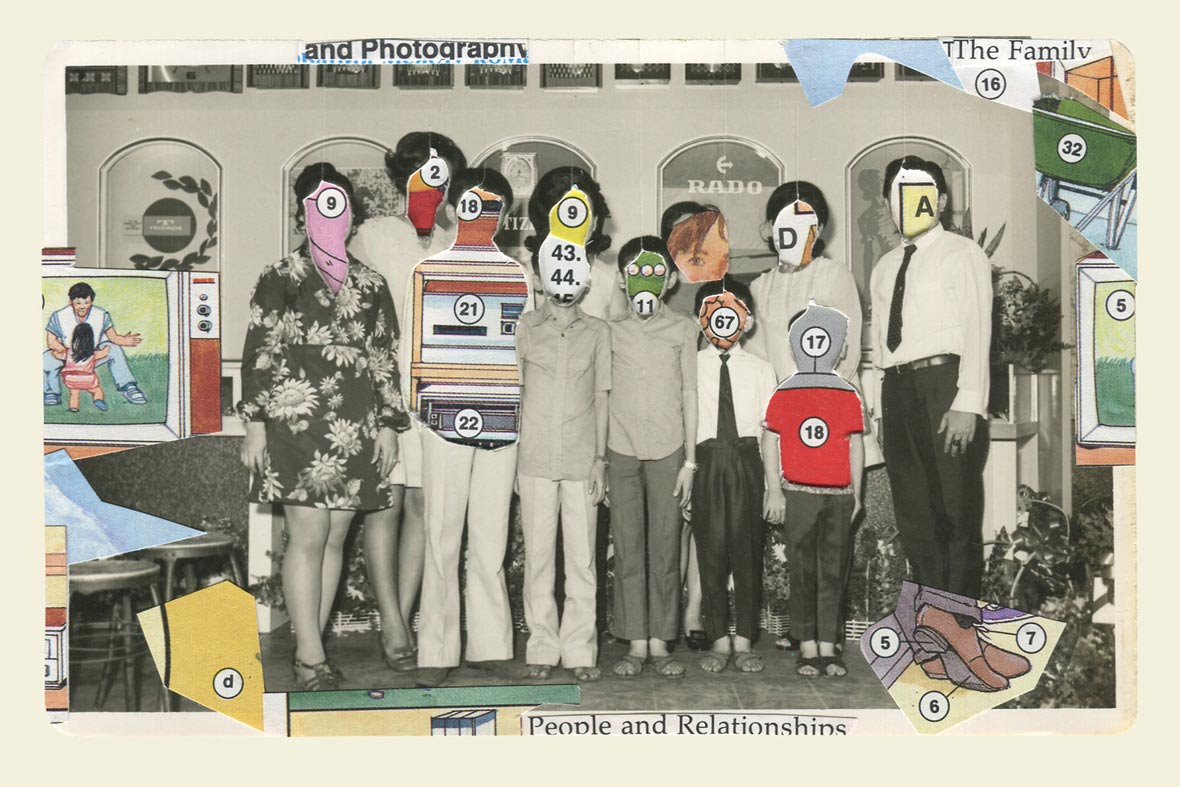
Flipping through the old photo album of a total stranger can be a fascinating experience. We’re faced with the carefully arranged memories of someone who lived through different times, the people they cherished and chose to remember. This sensation of nostalgic bewilderment is what prompted Thai artist and graphic designer Pariwat Anantachina to create The L_st Album, a series of collages juxtaposing family photographs with user guides and manuals, all of which he collected from flea markets and thrift stores around Bangkok.
The series first debuted as a photo book printed by Palermo-based publishing house 89 Books in 2020. But as Anantachina’s collection grew, so did his artistic output, and he was given the chance to host a solo exhibition at SŌKO Art Gallery in Bangkok last February.
翻阅旧相册往往很有意思,你会重拾生命中不同时间发生的美好,那些珍惜和想要记住的人一下子浮现于眼前。受到念旧思绪的启发,泰国艺术家 Pariwat Anantachina 创作了《The L_st Album》拼贴系列,将复古家庭照片与类似模型拼装手册的元素组装在一起。作品中所有素材都来自他在曼谷附近的跳蚤市场和旧货店的收集。
《The L_st Album》系列最初以相册形式推出,由意大利巴勒莫出版社 89 Books 于 2020 年出版。随着 Pariwat 收集的素材不断丰富,作品也变得越来越多,去年 2 月,他获邀在曼谷 SŌKO 美术馆举办了个人展览。
The L_st Album‘s most striking aspect is that Anantachina cuts out the faces of the people in the original photographs, replacing them with pieces from manuals containing reference numbers and letters. “It’s a process of removing the original identity of the subject and simultaneously showing respect for their privacy,” he says.
This cut-and-paste method results in a surreal effect, giving these photographs an ambiguity that encourages viewers to reflect on them through the lens of their own experiences and relationships. “Each artwork represents the relationships we share with our families, lovers, and friends,” he explains. “These are bonds that we sometimes unintentionally lose—just like the owners of these photographs accidentally lost their pictures.”
通常,Pariwat 习惯将老照片中出现得人物面庞剪去,替换上各种参数和文字说明片段,这是他作品中的一大特色。他解释道:“这样做是为了删除照片人物原本的身份,同时也出于尊重他人隐私的考虑。”
特殊的剪贴方式带来某种超现实的观看体验,其模糊了人物具像化的直白,鼓励观众通过自己的经历和人际关系对照片进行思考。他说:“每一幅作品都代表了我们与家人、恋人和朋友的关系。人们有时会不知不觉地失去这些关系,正如照片的主人不小心弄丢了这些照片,两者是一样的道理。”
As a dedicated collector, Anantachina is constantly on the look out for artifacts with temporal value. He was first drawn to vintage photo albums because of the elaborate cover designs, the tactility of old film envelopes, and the appearance of the yellowing paper boxes used to store old photographs. However, when he looked into some of the pictures more carefully, he discovered a sense of universality that sparked his creativity. “I was not only curious about who the photographer and these people in the images were, but also perplexed by the background scenery. It was a fascinating thing to combine my imagination with these pictures endlessly,” he says.
作为一名收藏爱好者,Pariwat 喜欢在各地搜罗承载着时光印记的好物。最初引起他对旧相册兴趣的是过去那些设计精良出版物封面、发黄的胶片信封以及存放旧照片的斑驳纸盒。在翻看旧照片的过程中,Pariwat 渐渐发现了其中的魔力,他说道:“我不仅想知道照片的拍摄者和照片中人物的关系,就连照片背景的环境也让我深感好奇。照片往往可以激发人的更多幻想,这个过程很有趣。”
Since then, he’s collected thousands of photographs and film negatives, most of which are family photos taken in Thailand between the 1940s and 1980s. In black-and-white or faded colors, they show people in the prime of their lives, going on holidays, celebrating milestones, or simply congregating with loved ones. Because Anantachina removes their faces, their environments, wardrobe choices, and other objects in frame become more conspicuous. These photographs act as visual time capsules, revealing aspects of simpler and more innocent times—or at least that’s what they feel like in retrospect.
Many of the original photographs came with dates, names of places, or hand-written notes on their backs. They become clues to uncover the mystery behind the images. But, in most cases, they lead to dead ends, serving only as starting points for the imaginary narrations of Anantachina.
从那以后,他收集了数千张照片和底片,其中大部分是 1940 年代至 1980 年代在泰国拍摄的家庭照片。这些或黑白、或褪色的照片承载着那个年代的高光时刻:譬如节假日里的欢歌笑语、活动庆宴、或是亲朋好友的聚会等等。在人物脸部被忽略过后,照片中的环境、服饰以及更多其他元素被凸显出来。这些照片如同一个个时间胶囊,还原着当初简单、纯粹且真挚的年代。
许多照片背面都标记了日期、地点或备注,让观者拉起故事的线索。但绝大多数情况下,这些信息并不会提供答案,仅能作为想象的起点。
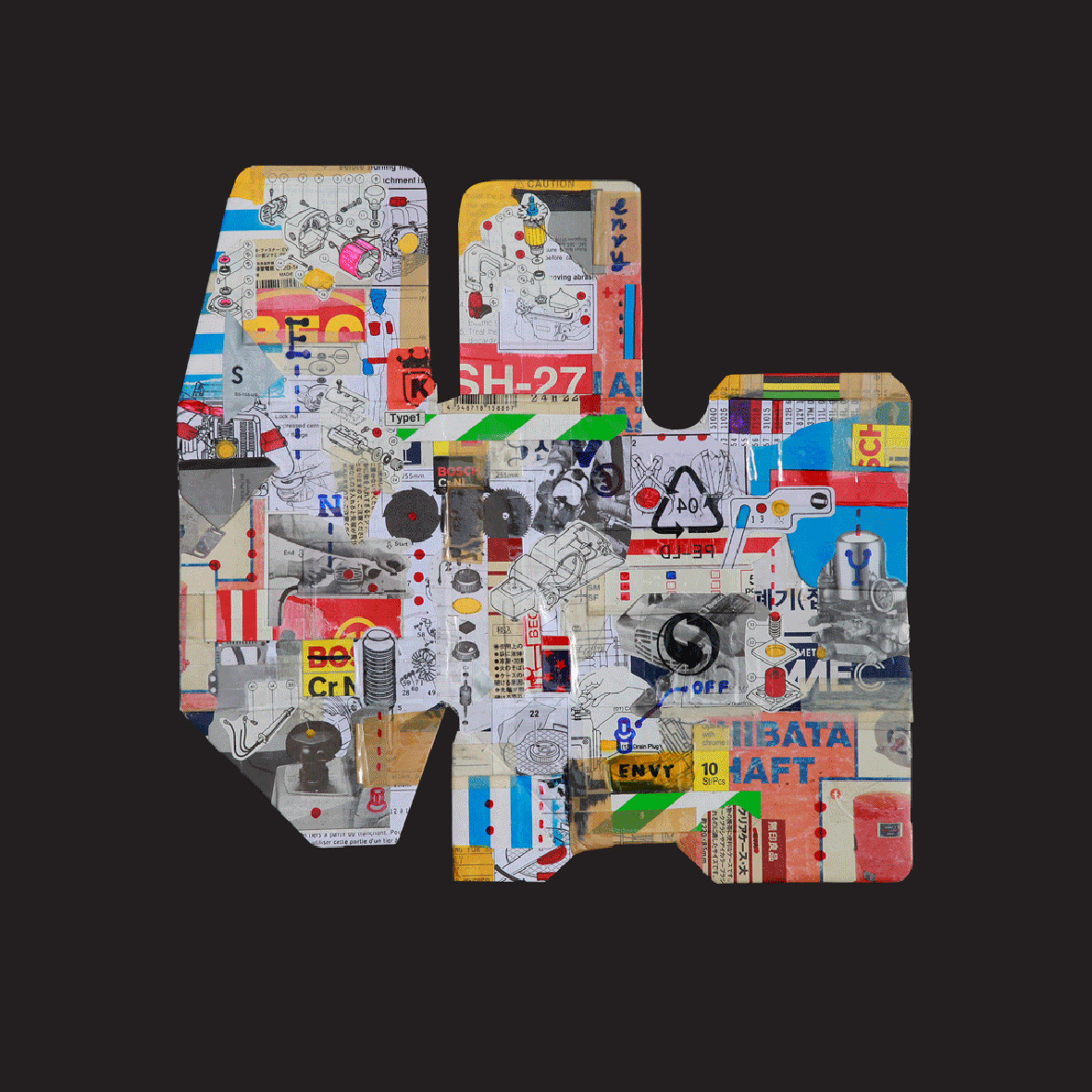
It’s not the first time user guides and manuals appear in Anantachina’s work. In his first art project, he used machine manuals as raw materials for a series of mixed media works. Zin Zin Machinery, as the series was called, was inspired by his family business, which dealt with agricultural machinery. These manuals symbolized his own family relations just as The L_st Album symbolizes the relations of several other families—the viewer’s included.
Pariwat 并不是第一次使用说明书手册元素进行创作。在他最早的一个艺术项目中,便以机械说明书作为素材,创作了一系列混合媒体作品。这个系列名为《Zin Zin Machinery》,创作灵感来自于的农作机械的拼装说明书。选择这些元素并非偶然,Pariwat 出身自农耕家庭,说明书元素恰恰反映了他个人与作品之间的联系。
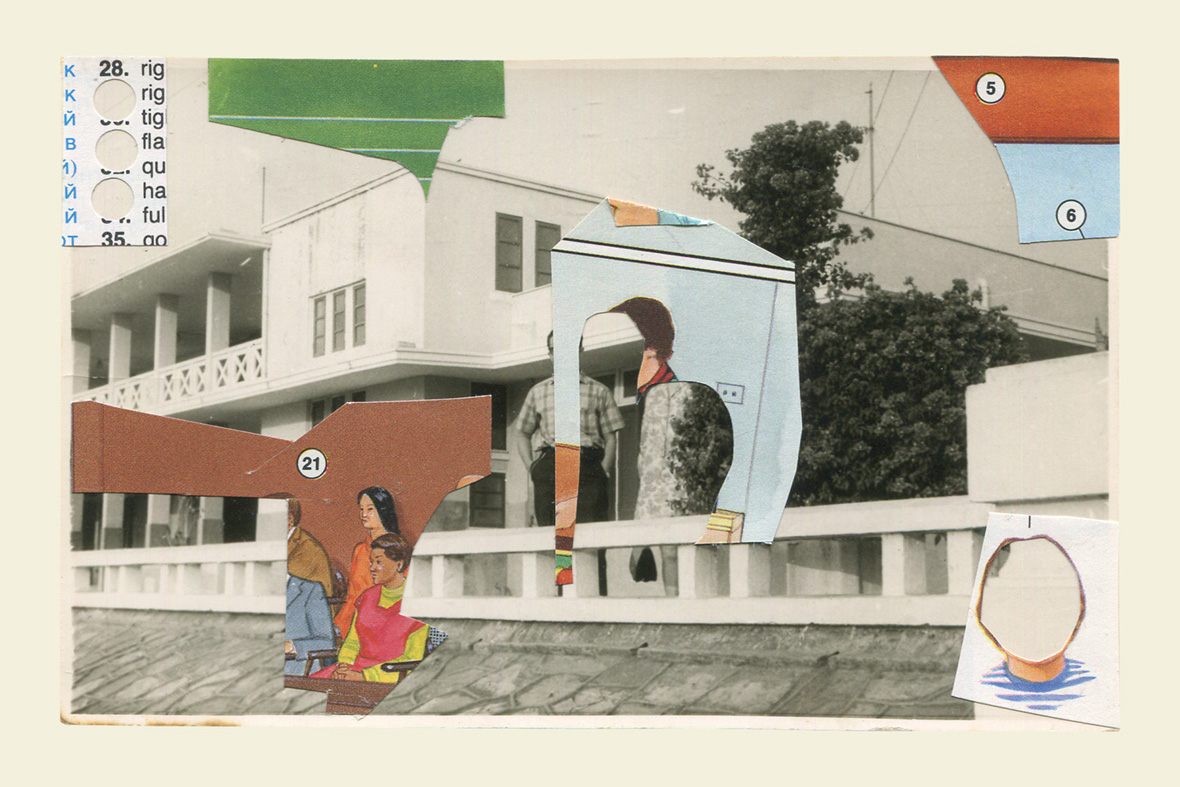
Often, he embeds secret personal meanings in his collages. “Some of the numbers and letters in the photographs can be decoded into stories of my life, while others relate to social events,” he reveals. “I sincerely hope that some numbers and letters might also mean something to viewers.” It’s this ambiguity that attracts Anantachina the most about collages, an art medium that defines his practice to a great extent. “Collages create layers of information. They can captivate through the dimensions of time and space. Their meanings vary depending on who’s looking at them, the context, and surroundings.”
他也常常会在拼贴画中嵌入一些“彩蛋”。他透露道:“照片中的一些数字和字母隐晦地表达着我自己的故事、或是真实发生的社会事件。同时,我也希望观众能在这些数字和字母之间找到更多特殊的含义。”
而恰恰是因为数字的不确定性,引起了 Pariwat 对拼贴艺术的兴趣。这种艺术媒介如今已是他主要的创作手段。“拼贴画能形成丰富的信息层次,让各种元素在时间和空间维度上更具吸引力。具体的理解也取决于观众所处的环境。”
As we stare at the faceless figures in Anantachina’s collages, we can’t help but wonder what they looked like, what their lives might’ve been like, and what could have happened for that treasured moment of theirs to slip from their hands and end up in the artist’s hands. Stripped of their original narratives and contexts, the collages are enigmatic. But through his reimagining, we’re allowed the chance to fill in the blanks of their lives with our personal reflections and stories.
不漏声色的人物,令观众不禁好奇:人物原本的面貌是怎样的?他们当年过着怎样的生活?以及这些珍贵照片是如何流落到 Pariwat 的手中的?当原始的叙述和背景被抹除,为拼贴作品增添了几分神秘。然而,通过 Pariwat 的重新构想,我们可以发挥自己的思考和经历,填补出照片中属于我们自己的人生。
Like our stories? Follow us on Facebook and Instagram.
Website: www.pariwatstudio.com
Instagram: @big_pariwat
Contributors: Tomas Pinheiro, Lucas Tinoco
Chinese Translation: Olivia Li


